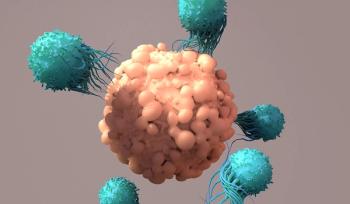
Feasibility of a Rapid Microbiological Method for Filterable Raw Materials
The rapid microbiological growth-based method represents an alternative for the quantification of contaminants in filterable products.
To ensure the safety and quality of pharmaceutical products, raw materials and additives must be free of contamination before they can be used in the manufacturing process. Traditional approaches for detecting microbial contamination in filterable samples are time consuming, requiring up to fourteen days to complete. As a result, there is increasing demand among pharmaceutical manufacturers and quality control laboratories for more rapid microbiological methods for contamination testing. Use of an alternative rapid test will ensure a faster pace of manufacturing and can ultimately accelerate time to market, leading to significant cost savings. Additionally, rapid testing will enable timely implementation of corrective actions.
Compendial methods for detecting microbial contamination in filterable samples are nearly one century old and are based on the morphological and biochemical characterization of microorganisms. However, recent technologies have emerged for rapid detection of microorganisms. In 2000, the Parenteral Drug Association (PDA) published the first guidance document on the validation and implementation of alternative rapid microbiological methods (1). The United States Pharmacopeia (USP) and European Pharmacopeia (EP) have also published guidance documents on alternative methods (2, 3).
EP Chapter 5.1.6 groups rapid microbiological methods (RMMs) into three categories: growth-based, direct measurement, and cell-component analysis (3). Growth-based methods detect a signal (e.g., colorimetric or bioluminescence) after a brief incubation period in liquid or on solid media. Direct measurement methods detect cell viability without requiring growth of the microorganism. Cell-component analysis, or indirect measurement, assesses the expression of certain cell components (e.g., DNA or RNA) that correlate with microbial contaminants. RMMs may be qualitative or quantitative, destructive or nondestructive, and may be applied to both filterable and nonfilterable products.
The Milliflex Quantum system (EMD Millipore) is a rapid microbiological, growth-based method (“rapid method”) for the quantitative detection of contaminants in filterable samples. The system uses universal enzymatic fluorescent staining of viable and culturable microorganisms (Figure 1). The fluorescent staining procedure is nondestructive, allowing downstream specific identification of the enumerated microorganisms (4).
Methods
This rapid microbiological method was evaluated at EMD Serono, Darmstadt, Germany, for the validation of the filterable raw materials glycerol, pyridoxine hydrochloride, and thiamine chloride hydrochloride. The microorganisms used in the validation study included Candida albicans, Bacillus subtilis, Staphylococcus aureus, and Aspergillus brasiliensis, and the isolate Staphylococcus epidermidis. Microorganisms that are detected during microbiological quality control are stressed as a result of starvation, heat, dehydration, and the presence of disinfectants. To simulate these conditions, the aforementioned microorganisms were exposed to 60 °C-or in the case of B. subtilis, starvation conditions-to induce spore formation. The microorganisms were stressed until they reached 50% of the original inoculum of the frozen stock solution; there were still more than 10 CFU and less 100 CFU per sample present.
Two methods were used in the validation study, which differed by inoculation. The inoculation was either performed at the last rinsing step, or the raw material buffer solution was inoculated directly. The raw materials that did not show an inhibitory effect were inoculated into the sample before rinsing. In case of a proved inhibitory effect, the inoculum was added in the last rinsing step (e.g., orange oil, peach aroma, orange aroma). Yeast were incubated at 20–25 °C and bacteria were incubated at 30–35 °C. The recovery rates were evaluated after three days using the rapid method (Table I). In parallel, the traditional compendial membrane filtration method was performed with an incubation time of five days.
Results
As expected, bacterial growth was sensitive to low pH, whereas the mold and yeast remained unaffected. A. brasiliensis was the most resistant of all tested organisms and was only verifiably inhibited by orange aroma. Orange oil, peach aroma, and orange aroma had the greatest inhibitory effect on the other microorganisms; the main ingredient in these substances is limonene. Growth inhibition of P. aeruginosa and B. subtilis by Na-saccharin was expected, as was the inhibitory effect of nicotinamide on B. subtilis and P. aeruginosa. What was surprising, however, was the inability of nicotinamide to inhibit the growth of S. aureus. The stressed B. subtilis appeared to be strongly sensitive to changes in pH and other conditions.
The recovery rates and p-values obtained using the rapid method were inside the limits for the three raw materials based on the European Directorate for Quality Medicines, demonstrating that the Milliflex Quantum method is applicable for quantitative quality control of these substances (5).
Conclusion
The rapid microbiological growth-based method represents an alternative for the quantification of contaminants in filterable products and has been successfully validated for three raw materials: glycerol, pyridoxine hydrochloride, and thiamine chloride hydrochloride. The use of rapid bioburden tests allows pharmaceutical manufacturers and quality-control laboratories to address contamination events sooner, avoid line shutdowns, reduce storage costs, and enable the earlier release of products to the market. The validation of this method for other raw materials is ongoing.
References
1. PDA, PDA Technical Report No. 33, "Evaluation, Validation and Implementation of New Microbiological Testing Methods," PDA Journal of Pharmaceutical Science and Technology, 53 (3) (2000).
2. USP, USP General Chapter <1223>, "Validation of Alternative Microbiological Methods," USP 35 (US Pharmacopeial Convention, Rockville, MD, December 2012).
3. EDQM, EurPh, General Text 5.1.6, (EDQM, Strasbourg, France, 2012).
4. N. Gealh, N. and M. Rieth, Swiss Pharma 34 (6), pp. 12–14 (2012).â¨
5. EDQM, EurPh, General Text 5.1.6, (EDQM, Strasbourg, France, 2014).
About the Authors
Jan Freitag, Friedrich Schiller University Fürstengraben 1, 07743 Jena, Germany Jan.Freitag@gmx.com Dr. Michael Rieth EMD Serono D-64293 Darmstadt, Frankfurter Strasse 250 Michael.Rieth@merckgroup.com
Newsletter
Stay at the forefront of biopharmaceutical innovation—subscribe to BioPharm International for expert insights on drug development, manufacturing, compliance, and more.





